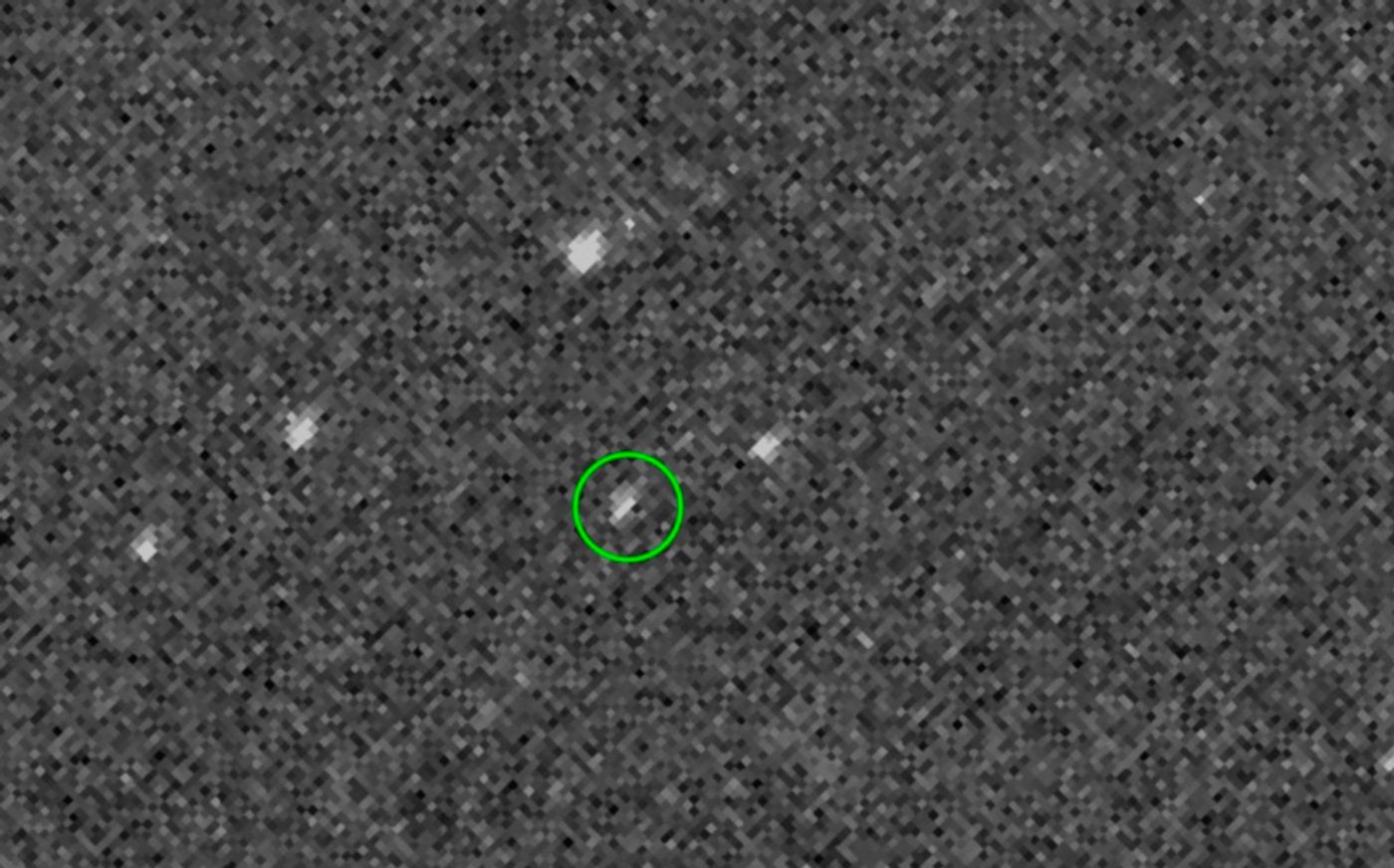NASA's OSIRIS-REx Spacecraft Snaps its First Picture of Bennu
NASA’s Origins, Spectral Interpretation, Resource Identification, Security-Regolith Explorer (OSIRIS-REx) mission is now one step closer to realizing its primary goal of becoming the first spacecraft to visit a near-Earth object (NEO), collect a sample from its surface, and return it to Earth for analysis.
OSIRIS-REx is targeting an ancient asteroid known as Bennu for its scientific observations. The spacecraft launched from Earth’s surface on September 8th, 2016, and has traveled approximately 1.1 billion miles away from our planet during its two-year journey through space.
Image Credit: NASA/Goddard/University of Arizona
But as NASA notes in an official statement, OSIRIS-REx is beginning to close in on Bennu, and the spacecraft’s onboard PolyCam camera recently snagged its first image of the asteroid from 1.4 million miles away.
“Now that OSIRIS-REx is close enough to observe Bennu, the mission team will spend the next few months learning as much as possible about Bennu’s size, shape, surface features, and surroundings before the spacecraft arrives at the asteroid,” explained Dante Lauretta, the principal investigator of the OSIRIS-REx mission.
“After spending so long planning for this moment, I can’t wait to see what Bennu reveals to us.”
When OSIRIS-REx finally arrives at its destination, it will study the body up close. The spacecraft will transmit its findings back to scientists on Earth, providing them with a front-row seat to Bennu’s physical characteristics.
At first, it will investigate whether Bennu exhibits any dust plumes or natural satellites, and then it will move on to studying the body’s light and spectral properties. Then it will begin documenting the body’s shape and unique surface features.
Later, OSIRIS-REx will fly close to Bennu’s surface at one of two plausible sample sites to agitate the surface and generate airborne dust. It’s this very dust that the spacecraft will then attempt to capture for its sample to be returned to Earth.
But none of this will be easy; Bennu is perhaps the single smallest object that any spacecraft will have ever orbited, and its small gravitational influence poses the most significant challenge of all concerning getting OSIRIS-REx to orbit it correctly.
“Bennu’s low gravity provides a unique challenge for the mission," explained project manager Rich Burns of NASA. "At roughly 0.3 miles in diameter, Bennu will be the smallest object that any spacecraft has ever orbited.”
Fortunately, engineers have thought this through and will utilize four separate maneuvers to slow the spacecraft down during its approach to make this work.
So, why Bennu of all the asteroids out there? It’s of particular interest because of the lingering threat that it could collide with Earth between the years 2175 and 2199. That said, scientists want to know more about it.
Related: This is how NASA will prepare for future near-Earth object collisions
With an official tango date of December 3rd, 2018, it should be interesting to see how the OSIRIS-REx mission will go and whether it will yield the results we’ve been hoping for. But with some crossed fingers and patience, everything should go just fine.
Source: NASA









